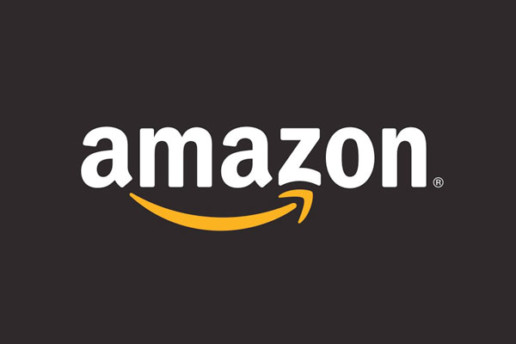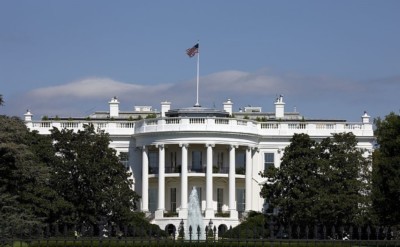Eligibility, lack of plans keep millennials from retirement saving
As millennials reach the age to save for retirement, there is a clear lack-of-knowledge in the arena of what plans they need and how to save for them with the continuing costs of their lifestyles. In this article, we take a look at why this is.
Millennials are way behind on retirement savings, but it has nothing to do with self-indulgence or feasts on avocado toast.
Instead, what they actually need are retirement plans, and earlier eligibility to save in them.
A new report from the National Institute of Retirement Security highlights millennials’ precarious retirement futures with the news that only a third are saving for retirement. It’s not because they don’t want to, or are being extravagant, because when the numbers are crunched they actually save at rates equal to or higher than those of their elders—even if not as many of them can do so.
Millennials are getting a raw deal. Not only are traditional defined benefit plans disappearing, with the likelihood that a millennial might actually be able to participate in one, they’re worried that Social Security—which runs way behind the cost of living anyway—will be of even less help to them in the future as an income replacement than it already is for current retirees. Add to that the fact that more than half of millennials are expected to live to age 89 or even older, and they have the added worry of outliving whatever savings they might have managed to stash.
In fact, millennials need to save way more than their elders to stand a chance of having a retirement that honors the meaning of the word. Says the report, “[S]ome experts estimate that millennials will need to make pretax retirement plan contributions of between 15 percent to 22 percent of their pretax salary, which at 22 percent, is more than double the recommendation of previous generations.”
They’re viewed as irresponsible, but 21 percent are already worried about their retirement security, says the report, and while 51 percent of GenXers and boomers contribute to their own retirement plans, just 34.3 percent of millennials participate in an employer’s plan, although 66 percent work for bosses that offer such plans.
In fact, 66.2 percent of millennials have no retirement savings at all. Zip, zilch, zero. And millennial Latinos? A whopping 83 percent have a goose egg, not a nest egg. Latinos have it much worse, incidentally, than any other millennials group, with just 19.1 percent of millennial Latinos and 22.5 percent of Latinas participating in an employer-sponsored plan, compared with 41.4 percent of Asian men and 40.3 percent of millennial white women—who have the highest rates of participation in a retirement plan.
Despite working for an employer who provides workers with a retirement plan, millennials don’t always have a way to save, since said employer may have set barriers in place to prevent participation until an employee has been with the company for at least a year. And millennials are, of course, known as the job-hopping generation—so if they don’t stay in one place they never qualify. Close to half of millennials—40.2 percent—say they’re shut out of retirement plans because of employers’ eligibility requirements, including working a minimum number of hours or having a minimum tenure on the job.
But don’t accuse them of having no desire to participate: when they’re eligible, more than 90 percent do so.
Read the article.
Source:
Satter M. (2 March 2018). "Eligibility, lack of plans keep millennials from retirement saving" [Web Blog Post]. Retrieved from address https://www.benefitspro.com/2018/03/02/eligibility-lack-of-plans-keep-millennials-from-re/
Apple launching concierge health care centers for employees
Did you know Apple is now offering healthcare centers for their employees? Check out this article from Benefit Pro for further information.
This spring, Apple employees will see the first phase of Apple’s new approach to employee health care: on-site health clinics.
According to Healthcare IT News, Apple plans to launch a group of internal health centers as it moves to boost the health and wellness of its employees. According to the report, the company has already “quietly published a webpage for the program, called AC Wellness Network, which includes a description of the company’s goals as well as information on a number of open positions.”
“AC Wellness Network believes that having trusting, accessible relationships with our patients, enabled by technology, promotes high-quality care and a unique patient experience,” Apple has said on the webpage. It continues, “The centers offer a unique concierge-like healthcare experience for employees and their dependents. Candidates must have an appreciation for the patient experience and passion for wellness and population health—integrating best clinical practices and technology in a manner that drives patient engagement.”
Apple’s move comes in the wake of an earlier declared partnership among Amazon, JPMorgan Chase and Berkshire Hathaway for their own independent health care company intended to bolster employee health at lower cost than conventional providers.
AC Wellness, says the report, will exist as “an independent medical practice,” although the company is a subsidiary of Apple. Job listings include not just physicians but also such positions as workflow designers, and the website listings suggest the first centers will be located in Santa Clara, California and in the company’s Cupertino, California campus.
Other recent health care steps taken by the company, according to an HRDive report, include its January announcement that it is making personal health records accessible on the latest iPhones, as well as its exploration of ways its Apple Watch could have medical applications, like detecting irregular heartbeats in wearers.
According to a CNBC report, some former Stanford Health Care employees have been affiliated with AC Wellness for at least five months. Says Healthcare IT News, “[t]hese sources also said that Apple will use the centers as a testing ground for its upcoming health and wellness products prior to large-scale consumer rollout, and that the company notified third-party vendors this week about its upcoming health clinics.”
Read the article.
Source: Satter M. (1 March 2018). "Apple launching concierge health care centers for employees" [Web Blog Post]. Retrieved from address https://www.benefitspro.com/2018/03/01/apple-launching-concierge-health-care-centers-for/
Is a Health Savings Account Worth Your Time? The Best Advice from an Experienced Group Benefits Consultant.
This month’s CenterStage features Kelley Bell, a Group Benefits Consultant at Saxon. With over 25 years of experience in the financial industry, Kelley knows a thing or two on HSAs or Health Savings Accounts – what they are, who is eligible, how they’re funded, and when they can be used.
Kelley enjoys partnering with business owners and human resources managers to be their Healthcare Consultant. She understands that each business is unique and is dedicated, accessible and proactive in serving the needs of each client.
So, is an HSA a right fit for you? Let’s find out!
The Break-Down
Very similar to personal savings accounts, money in a Health Savings Account (HSA) is used to pay for eligible healthcare expenses (medical, dental and vision). You, not your employer or insurance company, own and control the money in your HSA. To be eligible for an HSA, you must have a special type of health insurance called a high-deductible health plan (HDHP).
With an HSA you can make tax-deductible contributions each year to pay for current and future healthcare costs. What you don't use in any given year will stay invested and continue to grow tax-free, assuming you eventually pull it out to use for medical costs. -CNN Money
Saxon offers HDHP group plans from one person on up that can be paired with the HSA. Here are some different highlights you should know if you are considering this type of Health Savings Account:
- HSA's aren't ideal for everyone. If having a high deductible seems too risky to you – or if you anticipate having significant healthcare expenses – a plan with a lower deductible and lower co-pays might make more sense.
- There are tax advantages, because deductibles on the HDHP are higher, premiums are generally lower.
- There is a maximum contribution limit per calendar year of $3,400 for individuals and $6,850 for families for 2018. Sometimes, these maximums do not reach your deductible. A personal tip: “Try to add a small amount via pre-tax payroll. You can change the amount anytime and if you have a significant procedure, try adding the funds to the account before the payment is due
- If you’re over the age of 55, you can make an additional “catch-up” contribution of $1,000 to that account.
- It is your account. You make the decisions about the contributions and its use. If the funds are not used, the money rolls over to the next year and continues to grow over time.
- If your employer switches to a different plan, your HSA is still your HSA. The money within your HSA is yours and can continue to be used for eligible medical expenses until it runs out.
- Most banks provide you with access to your HSA through a checkbook and debit card. You can use these to pay your doctor, as well as for prescriptions at the pharmacy.
Whether an HSA is a good fit for you is determined through each of these highlights, but it comes down to personal preference and your overall health. There’s a lot of freedom with HSAs – which is why it’s important to take your time considering every perk and downfall.
Contributions, Withdrawals, Earnings, & Roll Over
The money you deposit into the account is not taxed. The idea is people will spend their healthcare dollars more wisely if they're using their own money.
However, others can contribute to your HSA. Contributions can come from various sources, including you, your employer, a relative and anyone else who wants to add to your HSA. However, if you exceed the maximum contribution limit, you could be penalized by the IRS.
- Pre-tax contributions. Contributions made through payroll deposits (through your employer) are typically made with pre-tax dollars, which means they are not subject to federal income taxes. In most states, contributions are not subject to state income taxes either. Your employer can also make contributions on your behalf, and the contribution is not included in your gross income.
- Tax-deductible contributions. Contributions made with after-tax dollars can be deducted from your gross income on your tax return, which means you may owe less tax at the end of the year.
It’s also key to understand withdrawals, earnings, and roll over with HSAs:
- Tax-free withdrawals. Withdrawals from your HSA are not subject to federal (or in most cases, state) income taxes if they are used for qualified medical expenses.
- Earnings are tax-fee. Any interest or other earnings on the assets in the account are tax free.
- Funds roll over. If you have money left in your HSA at the end of the year, it rolls over to the next year.
- Investment tool. Many people use it as an investment tool, not just for current or future medical expenses, but for long-term retirement planning.
Keep your receipts in the event that you are audited by the IRS to show that you used the funds in your HSA for eligible medical expenses.
Conclusion
A Health Savings Account can be a great choice for people who wish to limit their upfront healthcare costs while saving for future expenses. HSAs go together with HDHPs. In addition, favorable tax treatment means you may owe less in taxes on your income tax return. What’s more, an HSA may allow you to pay in pre-tax dollars for items your employer’s other insurance options don’t cover, such as eyeglasses.
HSAs have the potential to become “more compelling than a 401(k)” due to tax-deductible and tax-deferred incentives. Does it sound like you’re a perfect match for a Health Savings Account? Still not sure if a HSA a good fit for you? Contact Kelley at 513-774-5493 for more information on taking this step towards a better health plan.
Download The Full Article
A New Approach to Paid Leave: WorkFlex in the 21st Century Act
From SHRM, let's take a look a this innovative approach toward paid leave using WorkFlex.
Do you ever sit in your office and wonder about everyone else? Ponder whether anyone is dealing with the same things that you are in that very moment? The simple fact is that everyone independent of age, gender, race or title, wants to be there to support their family. For myself, that means advocating for clients, while caring for my mother and doing all that I can for my wife and two boys. It is quite a balancing act on the best of days. To be fair, I know that I am not alone in this balancing act. As I write this I am wondering if you know exactly what I mean. Perhaps not for yourself, but a colleague or a friend.
Now since we generally live, work or both in New Jersey and in particular within the Delaware Valley there are some things that impact our ability to balance. For example, if you work for an organization that has offices in Philadelphia, PA; Wilmington, DE; Trenton, NJ; Montclair, NJ and Haddonfield, NJ exactly how do you provide equal paid leave to employees? Why should you care? Because these specific locations differ in how they require paid leave to be provided to employees. Are you concerned about this? You are not alone, clients regularly ask what to do as it relates to dealing with paid leave. Often this is more challenging for us than in most places around the country due to the varying ways that towns as opposed to States or the Commonwealth deal with this issue.
Some time ago I was asked to assist SHRM with the creation of federal legislation to address the issue of varying applications of paid leave laws around the country. After a significant amount of discussions, revisions and hard work by a host of individuals we came up with a legitimate proposal to address our respective concerns. Recently the “Workflex in the 21st Century Act” (HR 4219) was introduced in the House by Representative Mimi Walters. This bill is designed to support the goals of everyone, not just employers or employees. You can read more about the specifics at: https://www.advocacy.shrm.org/workflex.
For now, allow me to give you three specific reasons (although there are more) that both you and your organization should support this legislation:
First, unlike federal mandates under the FMLA, FLSA, or ADA, this legislation is OPT-IN, which means as an employer in order for your organization to be held responsible under the bill it would have to decide to agree to it first. Put another way, an employer is not required to do it if it chooses to go in another direction.
Second, many federal employment laws bring with them a threshold beyond which every employer is held to the same standard, however that is not the case with the “Workflex in the 21st Century Act.” It is designed to grow with your organization. As a result the benefit thresholds change based on the number of employees in an organization, so that it supports growth rather than stifling expansion.
Third, contrary to the way things are currently going in our region, this bill provides a level of certainty and flexibility for both employers and employees alike to know the threshold of their leave benefits, which will result in more productive employees and organizations. Part of the reason for this certainty is that the various local leave laws would be preempted by this bill.
What does all this mean? I would suggest that this bill is a good compromise of interests across the spectrum of both employers and employees, as well as unions, who want to do the right thing. Allow for realistic time to care for a child, parent or for yourself. No one needs to change jobs to get a specific type of benefit and employers can choose if it makes sense for their workplace, rather than being dictated to in terms of the benefits to provide their employees.
Now I would like to challenge you to join me. This is the first piece of legislation that SHRM has created for the workplace and as you can see the goal is to address concerns that all workers have, independent of title, so we can all have the balance that we need and want in order to be better contributors in our respective organizations, supportive of our parents, children and ourselves. How can we achieve this together? We can all reach out to our federal legislators and let them know that you support the “Workflex in the 21st Century Act” (HR 4219). You can find more information on https://www.advocacy.shrm.org/workflex or on the SHRM Advocacy App. Let’s take this opportunity to make the workplace better for everyone, together.
Read more.
Source: Lessig L. (February 8th, 2018). "A New Approach to Paid Leave: WorkFlex in the 21st Century Act" [Web Blog Post]. Retrieved from address https://www.advocacy.shrm.org/shrm/app/document/26467137
A New Approach to Paid Leave: WorkFlex in the 21st Century Act
From SHRM, let's take a look a this innovative approach toward paid leave using WorkFlex.
Do you ever sit in your office and wonder about everyone else? Ponder whether anyone is dealing with the same things that you are in that very moment? The simple fact is that everyone independent of age, gender, race or title, wants to be there to support their family. For myself, that means advocating for clients, while caring for my mother and doing all that I can for my wife and two boys. It is quite a balancing act on the best of days. To be fair, I know that I am not alone in this balancing act. As I write this I am wondering if you know exactly what I mean. Perhaps not for yourself, but a colleague or a friend.
Now since we generally live, work or both in New Jersey and in particular within the Delaware Valley there are some things that impact our ability to balance. For example, if you work for an organization that has offices in Philadelphia, PA; Wilmington, DE; Trenton, NJ; Montclair, NJ and Haddonfield, NJ exactly how do you provide equal paid leave to employees? Why should you care? Because these specific locations differ in how they require paid leave to be provided to employees. Are you concerned about this? You are not alone, clients regularly ask what to do as it relates to dealing with paid leave. Often this is more challenging for us than in most places around the country due to the varying ways that towns as opposed to States or the Commonwealth deal with this issue.
Some time ago I was asked to assist SHRM with the creation of federal legislation to address the issue of varying applications of paid leave laws around the country. After a significant amount of discussions, revisions and hard work by a host of individuals we came up with a legitimate proposal to address our respective concerns. Recently the “Workflex in the 21st Century Act” (HR 4219) was introduced in the House by Representative Mimi Walters. This bill is designed to support the goals of everyone, not just employers or employees. You can read more about the specifics at: https://www.advocacy.shrm.org/workflex.
For now, allow me to give you three specific reasons (although there are more) that both you and your organization should support this legislation:
First, unlike federal mandates under the FMLA, FLSA, or ADA, this legislation is OPT-IN, which means as an employer in order for your organization to be held responsible under the bill it would have to decide to agree to it first. Put another way, an employer is not required to do it if it chooses to go in another direction.
Second, many federal employment laws bring with them a threshold beyond which every employer is held to the same standard, however that is not the case with the “Workflex in the 21st Century Act.” It is designed to grow with your organization. As a result the benefit thresholds change based on the number of employees in an organization, so that it supports growth rather than stifling expansion.
Third, contrary to the way things are currently going in our region, this bill provides a level of certainty and flexibility for both employers and employees alike to know the threshold of their leave benefits, which will result in more productive employees and organizations. Part of the reason for this certainty is that the various local leave laws would be preempted by this bill.
What does all this mean? I would suggest that this bill is a good compromise of interests across the spectrum of both employers and employees, as well as unions, who want to do the right thing. Allow for realistic time to care for a child, parent or for yourself. No one needs to change jobs to get a specific type of benefit and employers can choose if it makes sense for their workplace, rather than being dictated to in terms of the benefits to provide their employees.
Now I would like to challenge you to join me. This is the first piece of legislation that SHRM has created for the workplace and as you can see the goal is to address concerns that all workers have, independent of title, so we can all have the balance that we need and want in order to be better contributors in our respective organizations, supportive of our parents, children and ourselves. How can we achieve this together? We can all reach out to our federal legislators and let them know that you support the “Workflex in the 21st Century Act” (HR 4219). You can find more information on https://www.advocacy.shrm.org/workflex or on the SHRM Advocacy App. Let’s take this opportunity to make the workplace better for everyone, together.
Read more.
Source: Lessig L. (February 8th, 2018). "A New Approach to Paid Leave: WorkFlex in the 21st Century Act" [Web Blog Post]. Retrieved from address https://www.advocacy.shrm.org/shrm/app/document/26467137
Personalizing health plans with technology
Technology offers advanced opportunities to make your health plan customized to your employees. Check out this article from Employee Benefit Advisor by Cort Olsen for more information.
Many advisers are using digital monitoring to evaluate the status of wellbeing within a given employer’s employee population.
Craig Schmidt, senior wellness consultant for EPIC, says one of the ways he is able to identify the companies that are offering strong digital wellness plans is through their ability to integrate such programs with claims data. He utilizes a push style notification to a mobile device to inform individual employees about specific plans that can coordinate well with their conditions as a further enhancement.
Samantha Gardiner, director of product management at Health Advocate, says her company has combined wellness, chronic condition management and client outreach all into one program to improve the health of employees and reduce claims and pharmaceutical costs for employer-provided health plans.
“We take the data and provide alerts via our website, email or mobile push notifications to keep employees informed about their personal health conditions,” Gardiner says. “If we have the data, we can really target and personalize the program toward company goals and members’ personal goals.”

In order to identify the best in class among the programs offered by wellness providers, Schmidt says he looks at the number and quality of interfaces and outcomes from the program as well as success stories that employees can share that can flesh out an employer’s return on investment.
“We can look at results six months or even a year after an employee has participated in the program to see if behavior changes have taken place,” Schmidt says. “If the plan integrates and reacts to the systems the employer has in place for his or her employees, then we will know if the program is a right match.”
Integration
Monica Majors, vice president of marketing and communications of health plan products at Sutter Health, says a digital wellness program needs to integrate with a multitude of personal devices.
“The site must be responsive to all technology, such as a mobile device, a tablet, or for those who are deskbound, from their computer,” Majors says. “The flexibility of offering individual trackers as well as key based activity challenges through a wide range of activities will keep retention.”
The program can then offer a health assessment that can be aggregated into an overall employer report, which can then serve as a basis for customization for that specific workforce.
Marcia Otto, vice president of product strategy at Health Advocate, says her company offers biometric screenings that can be done onsite, which can then factor into an employee’s health risk assessment to further customize the personal health program.
“If we get biometric data from our biometric data collection or if the employee sends us the data from a third party, that is another data source we can look at to determine if they need further attention for diabetes, hyper tension or so on,” Otto says. “We can also collect data on what their last blood test reported, right down to how many fruits or vegetables they eat, which is then prioritized based on how sick the employee is.”
Incentivizing
To influence employees to remain on the wellness plan, employers have offered incentives. These incentives can range from gift cards and cash rewards to funding a HSA or a HRA.
Paul Sterling, vice president of emerging products at UnitedHealthcare, says users who are enrolled in the UnitedHealthcare Motion program – an app programmed to encourage employees to remain active throughout the workday using a smart phone or smart watch – rewards employees by funding money into an HSA or HRA as a way to retain users.
“We have three daily walking objectives through our FIT criteria – frequency, intensity and tenacity – that each of our members try to achieve,” Sterling says. “Each one of those objectives is tied to or associated with an incentive amount.”
For each objective the employee completes, UnitedHealthcare deposits $1 into the user’s HSA or HRA, depending what they have.
Each day, the employee can complete each of the objectives. It resets daily, allowing the employee to continue to receive up to $3 per day.
Over the course of one year, Sterling says participation in the Motion program has held at a steady 67%. “If you think about other products in the health and wellness space, that’s arguably 10 times the level of engagement achieved over that period of time others would achieve,” Sterling says.
While Gardiner says she cannot pin point the number of employees engaged in her program for an extended period of time yet, she thinks incentives do drive continued engagement for some employees who need the extra push to be active or engage in a healthier lifestyle.
“An incentive program that provides at least a $300 incentive to participate is where we see our most engagement,” Gardiner says. “It all depends on the goals of the employer.”
Read more.
SOURCE: Olsen C. (4 February 2018). "Personalizing health plans with technology" [Web Blog Post]. Retrieved from address https://www.employeebenefitadviser.com/news/personalizing-health-plans-with-technology?feed=00000152-175f-d933-a573-ff5f3f230000
SaveSave
SaveSave
Will Amazon-Berkshire-JPMorgan coalition kickstart a benefits revolution?
What will happen if the Amazon-Berkshire-JPMorgan coalition becomes a real thing? Find out in this article from Employee Benefit Advisor.
The announcement that Amazon, Berkshire Hathaway and JPMorgan Chase would form an independent healthcare company for their U.S. employees is just one more move in a growing, albeit relatively quiet, revolution inside the benefits industry: Employers banding together for more control over a health system they see as wasteful and inefficient.
Employee medical expenditures have been the driving factor behind these moves. Last year, premiums for employer-sponsored family coverage hit $18,764, up 3% from the previous year, with employees paying an average $5,714 toward the cost, according to the Kaiser Family Foundation.
Frustration with those costs — and the lack of quality that often goes along with them — has resulted in a number of employer initiatives. But the news of the three corporate behemoths’ coalition may propel even more employers to band together, looking for alternatives on how they provide coverage while driving transparency in an industry notorious for obfuscation.
While it didn’t make the same splash as the big three’s news, two years ago 20 of the country’s biggest companies, including American Express, Berkshire’s BNSF Railway, Caterpillar, Coca-Cola, du Pont, IBM, Ingersoll Rand, Marriott and Verizon, joined together to form the Health Transformation Alliance. The goal of the group is to use data analytics, collective leverage and shared expertise to lower costs for all members. The group has grown to almost 40 members.

And at about the same time, health and financial consulting firm Mercer started running employer collectives to help companies save on pharmacy costs. There also are individual efforts. Intel, notes American Benefits Council president James Klein, has been a leader in direct contracting with healthcare providers.
“When large and successful companies come together in this way, it’s potentially disruptive,” says Frank Easley, senior vice president of Aon’s health and benefits group, about the Amazon, Berkshire and JPMorgan partnership. “The healthcare system is ripe for positive disruption and is in need of new solutions that improve employee satisfaction and reduce costs.”
While the three giants did not detail what their new company would do, they did say in a statement that the entity’s focus will be on technology that will provide employees and their families with “simplified, high-quality and transparent healthcare at a reasonable cost.”
The collaboration will likely pressure profits for middlemen in the healthcare supply chain. Potential ways to bring down costs include providing more transparency in prices for doctor visits and lab tests, and by enabling direct purchasing of some medical items, a person familiar with the companies’ plans said.
Efforts to increase transparency have been an important focus for employers of late and have “enormous potential” when it comes to transforming employer healthcare, says benefits consultant Jack Kwicien. If employers can explain to employees how and where their healthcare dollars are going, it will not only give workers a better understanding of their own money, but it has the potential to build a better relationship between employer and employee.
In addition, Amazon’s e-commerce operation could be used to send medication direct to patient’s homes, saving them trips to a pharmacy. Its cloud-computing division can store patient healthcare records so they can be easily accessed by doctors anywhere. And its payments system could be used to automate payments with healthcare providers.
If Amazon, Berkshire and JPMorgan are successful in lowering costs, the weight of the big three might kick the transformation engine into high gear, leading to a dramatic shift in the benefits delivery as more employers look to use combined leverage to lower their health costs.
“Any time organizations of this caliber — these are world class organizations — say they are going to tackle healthcare, you have to pay attention,” says Mike Thompson, president and CEO of the National Alliance of Healthcare Purchaser Coalitions. The organization advises around 12,000 organizations that buy health plans for millions of employees.
Thompson says that given Amazon and Berkshire’s records, it’s clear “that they have the potential to truly change the consumer experience for their employees, and frankly, that could become a model that could be used by other employers.”
Some benefits insiders, however, express doubts that the three behemoths will spur a widespread industry disruption. Their two biggest doubts: that corporate America can successfully battle the nation’s largest healthcare players and, even if successful, if they can cut costs in a meaningful way.
“Most health costs are incurred by a small percent of the population with chronic conditions,” Klein says. “So if this initiative is just about how health costs are paid for, and does not promote ways to improve health itself, the impact will be minimal.”
Still, business groups say the potential is there for more employer involvement in controlling costs and delivering healthcare, and the need is real.
“New entrants with fresh approaches like these may be just the prescription our ailing healthcare system needs,” says Brian Marcotte, CEO of the National Business Group on Health. “The collective resources of these three companies, emerging technologies and Amazon’s customer obsession and supply-chain savvy gives me optimism that they will pursue a consumer-focused model that will transcend the fragmented, provider-centric delivery system that we have today.”
Read more.
SOURCE: Mayer K. (31 January 2018). "Will Amazon-Berkshire-JPMorgan coalition kickstart a benefitsrevolution?" [Web Blog Post]. Retrieved from address https://www.employeebenefitadviser.com/news/will-amazon-berkshire-jpmorgan-coalition-kickstart-a-benefits-revolution?feed=00000152-175f-d933-a573-ff5f3f230000
HHS Nominee Vows To Tackle High Drug Costs, Despite His Ties To Industry
What is President Trump’s solution for fighting high drug prices? From Kaiser Health News, check out this article on the new Department of Health and Human Services (HHS) nominee.
Senate Democrats on Tuesday pressed President Donald Trump’s nominee for the top health post to explain how he would fight skyrocketing drug prices — demanding to know why they should trust him to lower costs since he did not do so while running a major pharmaceutical company.
Alex M. Azar II, the former president of the U.S. division of Eli Lilly and Trump’s pick to run the Department of Health and Human Services, presented himself as a “problem solver” eager to fix a poorly structured health care system during his confirmation hearing before the Senate Finance Committee. Azar said addressing drug costs would be among his top priorities.
But armed with charts showing how some of Eli Lilly’s drug prices had doubled on Azar’s watch, Democrats argued Azar was part of the problem. Sen. Ron Wyden of Oregon, the committee’s top Democrat, said Azar had never authorized a decrease in a drug price as a pharmaceutical executive.
“The system is broken,” Wyden said. “Mr. Azar was a part of that system.”
Azar countered that the nation’s pharmaceutical drug system is structured to encourage companies to raise prices, a problem he said he would work to fix as head of HHS.
“I don’t know that there is any drug price of a brand-new product that has ever gone down from any company on any drug in the United States, because every incentive in this system is towards higher prices, and that is where we can do things together, working as the government to get at this,” he said. “No one company is going to fix that system.”
Azar’s confirmation hearing Tuesday was his second appearance before senators as the nominee to lead HHS. In November, he faced similar questions from the Senate Health, Education, Labor and Pensions Committee during a courtesy hearing.
If confirmed, Azar would succeed Tom Price, Trump’s first health secretary, who resigned in September amid criticism over his frequent use of taxpayer-paid charter flights. A former Republican congressman who was a dedicated opponent of President Barack Obama’s signature health care law, Price had a frosty relationship with Democrats in Congress as he worked with Republicans to try to undo the law.
Price and the Trump administration often turned to regulations and executive orders to undermine the Affordable Care Act, since Republicans in Congress repeatedly failed to enact a repeal. “Repeal and replace” has been the president’s mantra.
But at the hearing, Azar was circumspect about his approach, noting that his job would be to work under existing law. “The Affordable Care Act is there,” he said, adding that it would fall to him to make it work “as best as it possibly can.”
Senate Republicans touted Azar’s nearly six years working for the department under President George W. Bush, including two years as a deputy secretary. Committee Chairman Orrin Hatch (R-Utah) praised Azar’s “extraordinary résumé,” adding that, among HHS nominees, he was “probably the most qualified I’ve seen in my whole term in the United States Senate.” Hatch, who is the longest-serving Republican senator in history, has been a senator for more than 40 years.
In addition to drug costs, Azar vowed to focus on the nation’s growing opioid crisis, calling for “aggressive prevention, education, regulatory and enforcement efforts to stop overprescribing and overuse,” as well as “compassionate treatment” for those suffering from addiction.
Pressed about Republican plans to cut entitlement spending to compensate for budget shortfalls, Azar said he was “not aware” of support within the Trump administration for such cuts.
“The president has stated his opposition to cuts to Medicaid, Medicare or Social Security,” Azar said. “He said that in the campaign, and I believe he has remained steadfast in his views on that.”
But Democrats pushed back, pointing out that Trump had proposed Medicaid cuts in his budget request last year. Sen. Sherrod Brown (D-Ohio) said such cuts would hurt those receiving treatment for opioid addiction.
“What happens to these people?” he said.
Despite such Democratic criticism, Azar is likely to be confirmed when the full Senate votes on his nomination. An HHS spokesman Tuesday pointed reporters to an editorial in STAT supporting Azar, written by former Senate majority leaders Bill Frist and Tom Daschle — a Republican and a Democrat. “We need a person of integrity and competence at the helm of the Department of Health and Human Services,” they wrote. “The good news is that President Trump has nominated just such a person, Alex Azar.”
Read further.
Source:
Huetteman E. (9 January 2018). "HHS Nominee Vows To Tackle High Drug Costs, Despite His Ties To Industry" [Web blog post]. Retrieved from address https://khn.org/news/hhs-nominee-vows-to-tackle-high-drug-costs-despite-his-ties-to-industry/view/republish/
Level-funded plan uptake trickling down market
What are level-funded plans, and why are they becoming so popular? Allow this article to break down the facts for you.
A brighter light is being cast on level-funded group health plans as benefits decision-makers tackle open-enrollment season. Several industry observers say the trend is more pronounced given that the Affordable Care Act remains largely intact — for now.
There has been an ebb and flow to these self-insured underwritten plans over the past 18 months, says Michael Levin, CEO and co-founder of the healthcare data services firm Vericred. But with a fixed monthly rate for more predictability, he says they can drive 25% to 35% savings relative to fully-insured ACA plans that must comply with the medical loss ratio for a certain segment of the market.
Level funding typically leverages an aggregate and/or specific stop-loss product to cap exposure to catastrophic claims. These plans are offered by an independent third-party administrator or health insurance carrier through an administrative-services-only contract.
It’s best suited for companies with a very low risk profile comprised of young or healthy populations, according to Levin. And with low attachment, stop-loss coverage in most states, he explains that the plans have “very little downside risk from the group’s perspective.” Two exceptions are California and New York whose constraints on the stop-loss attachment point “essentially preclude level-funded plans from being offered” there, he adds.
The arrangement is trickling down market. “We’ve heard from carriers that will go down to seven employees, plus dependents, while others cut it off at 20 or 25,” he says.
David Reid, CEO of EaseCentral, sees a “resurgence of level funding” across more than 38,000 employers with less than 500 lives that his SaaS platform targets through about 6,000 health insurance brokers and 1,000 agencies. His average group is about 30 employees.
He’s also seeing more customers using individual-market plans rather than group coverage through Hixme’s digital healthcare benefits consulting platform. Under this approach, health plans are bundled with other specific types of insurance and financing as a line of credit to fill coverage gaps. Employer contributions are earmarked for individual-market plans, which are purchased through payroll deduction.
Read further.
Source: Shutan B. (17 November 2017). "Level-funded plan uptake trickling down market" [Web Blog Post]. Retrieved from address https://www.employeebenefitadviser.com/news/level-funded-plan-uptake-trickling-down-market?feed=00000152-175e-d933-a573-ff5ef1df0000
WHY IT MATTERS THAT MORE PEOPLE SIGNED UP FOR ACA HEALTH COVERAGE IN 2018
From The ACA Times, let's take a look at ACA Health Coverage in 2018.
It was meant to have the opposite effect.
The Trump administration’s decision to undermine the Affordable Care Act (ACA) by shortening the annual open enrollment period to 45-days and cutting funding to promote open enrollment was predicted to reduce the number of people who might seek insurance coverage for 2018 on HealthCare.gov.
Instead, more than 600,000 people signed up for health insurance under the ACA in the first four days of enrollment. According to Reuters: “The Centers for Medicare & Medicaid Services, a division of the Department of Health and Human Services, said that during the period of Nov. 1 through Nov. 4, 601,462 people, including 137,322 new consumers, selected plans in the 39 states that use the federal website HealthCare.gov.”
Access to healthcare remains top of mind for Americans. For instance, exit polls in Virginia for state elections found healthcareto be the most pressing issue on the minds of voters who elected a Democratic governor in that state. And entrepreneurs and small businesses owners and employees are among those that benefit greatly from having access to healthcare insurance plans through the ACA.
For employers, all this, along with recent guidance from the IRS, points to the ACA continuing strong and the employer mandate being enforced. If you haven’t done so already, now is the time to assess your compliance with the ACA and what data you need to file ACA related forms with the IRS for the 2017 tax year.
Read the original article.
Source:
Sheen R. (20 November 2017). "WHY IT MATTERS THAT MORE PEOPLE SIGNED UP FOR ACA HEALTH COVERAGE IN 2018" [Web blog post]. Retrieved from address https://acatimes.com/why-it-matters-that-more-people-signed-up-for-aca-health-coverage-in-2018/










